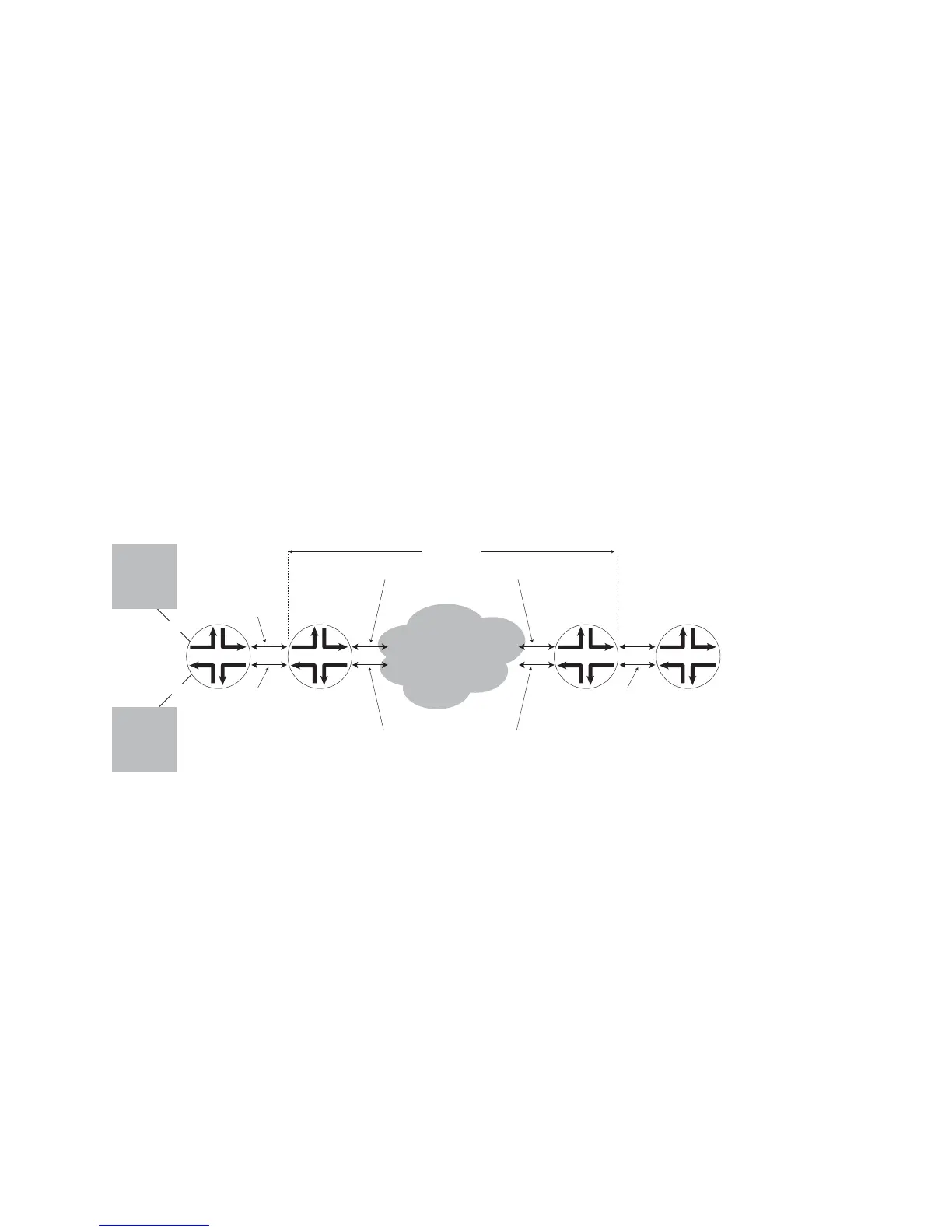host1(config-if)#svlan ethertype 8100
The following are the limitations in this setup when the user at the CE-side tags all
the packets from the CE-side, including C-VLAN tagged or untagged packets, with an
S-VLAN ID to identify a particular user:
■ If the S-VLAN Ethertype is 0x8100, then you must create two sub-interfaces, one
for the double-tagged packets, and the other for single-tagged packets to process
both these types of packets.
■ If the S-VLAN Ethertype is a value other than 0x8100, S-VLAN-tagged packets
without a C-VLAN ID cannot even be processed.
To enable Ethernet raw mode encapsulation and to enable the S-VLAN subinterface
to remove or add the S-VLAN tag at the PE-facing routers in the first scenario, two
pseudowires need to be created. Figure 126 on page 558 illustrates such a scenario
in which a sending CE device and a receiving CE device are connected using PE
routers through a MPLS network.
Figure 126: Martini Circuit with Two Pseudowires Between PE-Facing Routers
PE1CE1 CE2PE2
MPLS network
X tagged
for traffic
from CPE2
g016508
Ethernet traffic
with or without
SVLAN tag,
based on
subinterface
configuration
PW1 for double-tagged traffic
Pseudowire
PW2 for single-tagged traffic
X:Y tagged
for traffic
from CPE1
CPE1
CPE2
CVLAN Y
Untagged
Two customer premise equipment (CPE)-facing interfaces send a packet each to the
local CE device, CE1. The Ethernet packet is tagged with both an S-VLAN ID and a
C-VLAN ID from CPE1, while the packet from CPE2 contains only the S-VLAN ID.
These packets are forwarded to the local PE-router, PE1. In this case, two pseudowires
are required for the two conditions. Configuring the C-VLAN ID as 0 by using the
anyUntagged keyword in the svlan id svlanIDValue command enables both
double-tagged and single-tagged traffic that matches the S-VLAN ID to pass through
the S-VLAN subinterface. Using such a configuration, you need to create only one
pseudowire and only one S-VLAN subinterface on PE routers.
If an S-VLAN subinterface is configured with Ethertype as 0x8100 and C-VLAN ID as
any, a VLAN subinterface for the same ID shall cannot be configured, and vice-versa.
For example, you cannot configure the following two commands simultaneously:
host1(config-if)#svlan id X any
host1(config-if)#svlan ethertype 8100
and
558 ■ S-VLAN Subinterface with an Untagged C-VLAN ID Examples
JUNOSe 11.1.x BGP and MPLS Configuration Guide

